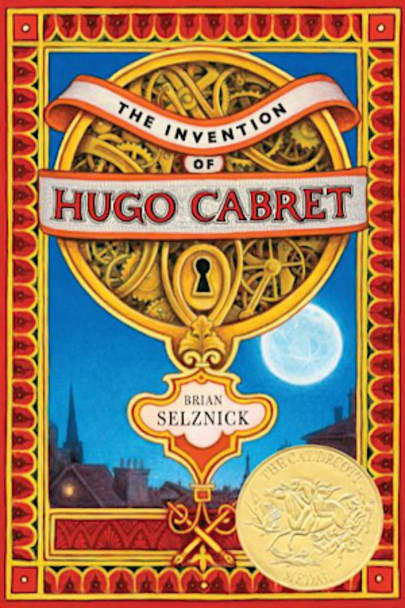Don’t miss Selznick’s other novels in words and pictures, Wonderstruck and The Marvels, which together with The Invention of Hugo Cabret, form an extraordinary thematic trilogy!2008 Caldecott Medal winnerThe groundbreaking debut novel from bookmaking pioneer, Brian Selznick!Orphan, clock keeper, and thief, Hugo lives in the walls of a busy Paris train station, where his survival depends on … where his survival depends on secrets and anonymity. But when his world suddenly interlocks–like the gears of the clocks he keeps–with an eccentric, bookish girl and a bitter old man who runs a toy booth in the station, Hugo’s undercover life and his most precious secret are put in jeopardy. A cryptic drawing, a treasured notebook, a stolen key, a mechanical man, and a hidden message from Hugo’s dead father form the backbone of this intricate, tender, and spellbinding mystery.With 284 pages of original drawings and combining elements of picture book, graphic novel, and film, Brian Selznick breaks open the novel form to create an entirely new reading experience. Here is a stunning cinematic tour de force from a boldly innovative storyteller and artist.
more



This book was provided to me by the library, because the library is awesome.
The two main inventions in this book are the automaton that Hugo repairs, and Hugo himself. The description on the back of the book calls him an orphan, clock keeper, and thief, but by the end of this glorious tale, he learns that he is so much more. The illustrations, as one would expect from a Caldecott winner, are lovingly wrought and convey the emotions of the characters beautifully. As for the characters, they are so human that their interactions and responses stir up strong feelings in the reader. I found myself on numerous occasions comforting and arguing with Hugo, Isabelle, and Georges in my head. If ever an author/illustrator should feel satisfied with the work they have done, it is Brian Selznick. I recommend this book to all readers. Young children shouldn’t let the size intimidate them, as more than half of the pages are illustrations. Between the many illustrations and the fact that a number of the pages have large areas of white space, this would be a good book for reluctant readers.
This book was the first book that really connected me to reading. I strongly suggest this book for tweens and young teens who can’t ever finish a book. This book is a quick read but totally worth it, the history that is sprinkled in is so interesting and the drawings are detailed and help explain the story.
A few days ago, there was a Google doodle for Georges Méliès to celebrate the release date of one of his movies (not A Trip to the Moon, a different one). As soon as I saw it, I remembered this book. Now, I don’t profess to be a Georges Méliès expert. Or really even particularly knowledgeable about the man, but I think from what little I do know of him, he would have enjoyed this. It is, ultimately, a simple story- a little orphan boy is caught stealing, and the world becomes more complex than he had realized. But how this story is told is really very cool- the book is a strange blend of graphic novel and fiction and history. Real events, real people are mentioned (photos of them are shown, even!) and they interact seemlessly with fictional people. There are pages of pictures that come to life as you turn the page, seeing them move. Is it a complicated book? No, not really. Is it a deeply impressive literary triumph? I think that’s for future generations to decide, but I’m not counting on it. Did it make me giggle, cry a little, feel a lot, and happily read it a second time? Yes. Did it leave enough of an impression that, years later, as soon as I saw the name Georges Méliès, I thought of this book? Very much so. Which, really, isn’t that the whole point of the story? That it stays with you? The Invention of Hugo Cabret has stayed with me.